JCS staging for Intermec CK-3 devices (WM5)
Introduction
Preparing the mobile hardware and software so that a customer can use JC Quick Order involves both the mobile server and the mobile client. A new set of download folders must be created for the customer as well as their inclusion in a .bat script run nightly. An initial full export also needs to be performed.
For the mobile client, initial installation and configuration must be done. The initial download can be done using the handheld device, but it's far quicker to utilize the PDA Emulator for this purpose.
All of this will be explained more fully below.
Note: There can be only ONE mobile device assigned for each Customer Group. At present the Customer Group is synonymous with Customer. If this is not this case, downloads will not work correctly for those mobile devices.
As an example, we'll stage DIS161 DISCOUNT HOUSE
Server Side
Creating New Customer Download Folders
Create a folder for DIS161 in the mobile download folder on the server:

Add a "Done" subfolder within DIS161:
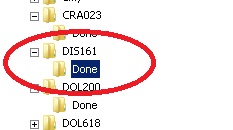
Now, copy and paste the DIS161 (and it's "Done" sub folder) to the "Download_docs" folder:

Modifying the JCSExportWeeklyUpdates.bat File
The .bat file is located here:

Add the following lines:
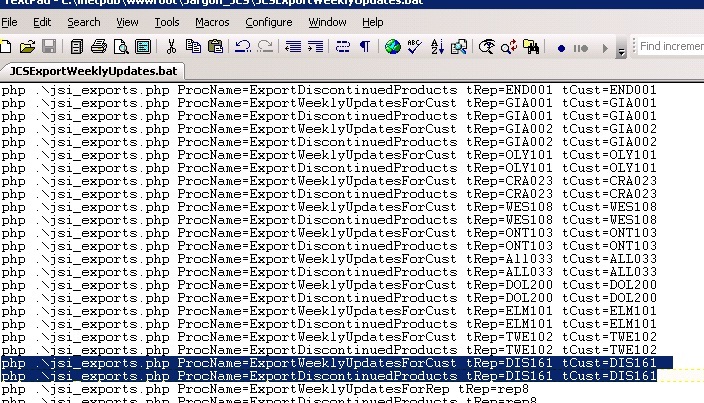
Performing the Initial Export
Use a web page to generate the initial full export. From the outside:
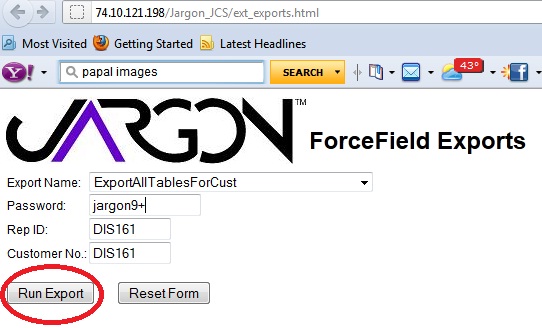
On the inside use: http://10.0.5.100/Jargon_JCS/ext_exports.html
Client Side
Preparing the Mobile Device
Optional: Perform hardware "triage" as described in the kbase titled Checkout procedures ("triage") for mobile hardware
- Install SD card into SD card slot.
- Press and hold power button for about 2 seconds. When you release , the CK3 goes into suspend mode.
- If necessary, disconnect the handstrap from the bottom of the CK3.
- Press the battery release tab toward the battery until the battery
releases, and then lift it away from the CK3.
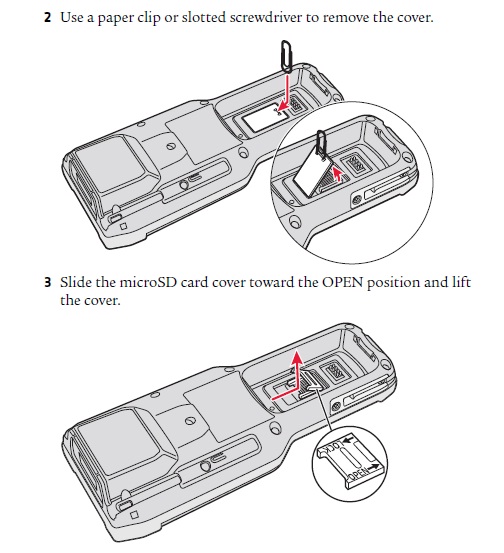
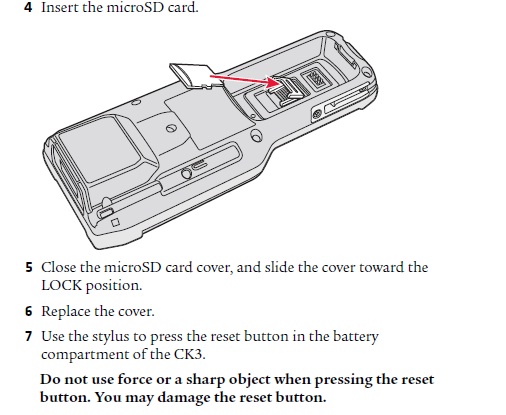
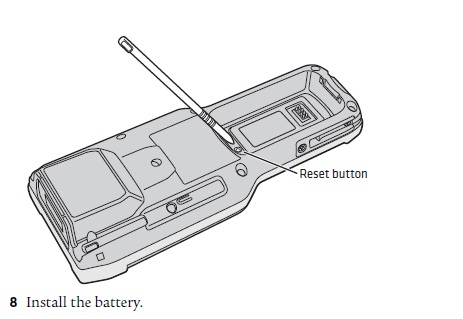
9. Power up the CK-3.
Perform a Clean reset A follows:
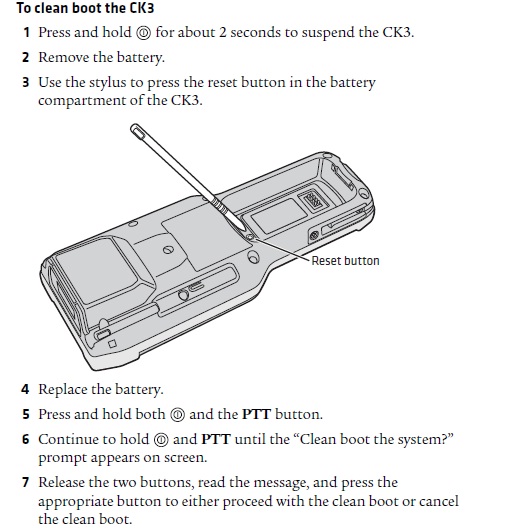
After this is done, you should see a series of screens like this:
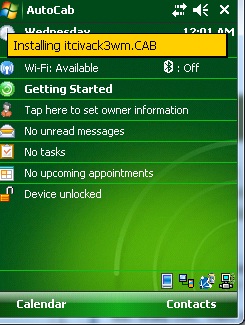
This process takes several minutes. Be patient. It will finish by resetting itself and then installing more code.
Finally, you'll see a screen like this:
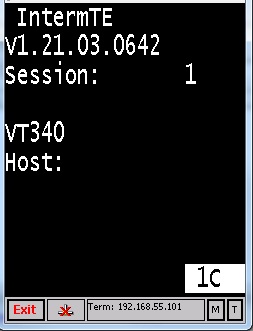
This is a telnet client that comes installed by default. Tap EXIT button and supply the password CR52401
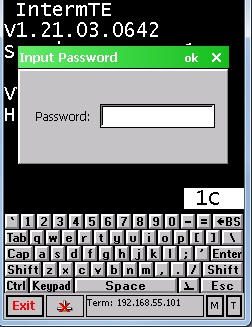
Confirm you wish to exit:
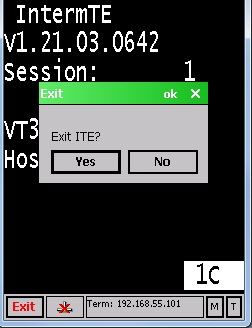
Now, defeat this telnet session from appearing at startup.
From the System tab in Settings, tap the Intermec Settings icon:
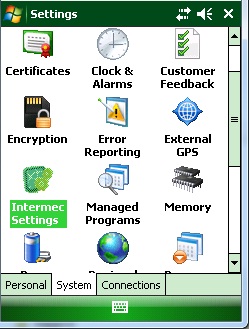
Locate the ITE application settings in the tree. Check the "No Autostart" checkbox:
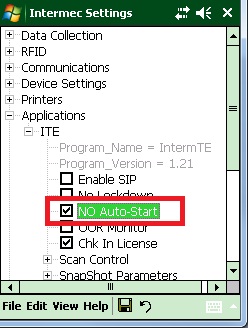
Be sure to save your settings before exiting:
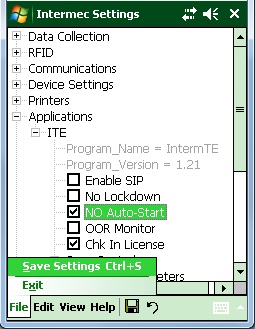
For future reference, here is a link for the full CK-3 User's Manual
Set the Date and Time:
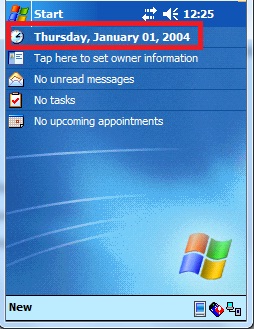
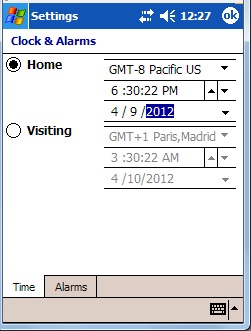
Set owner ID:
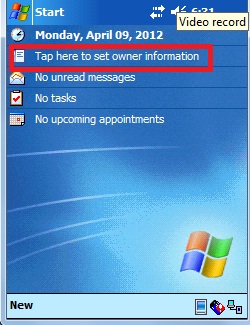
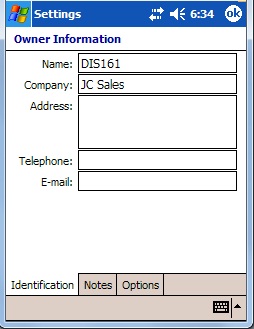
Verify Radio Power checkbox checked:
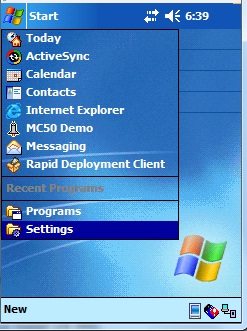 Tap System Tab:
Tap System Tab: 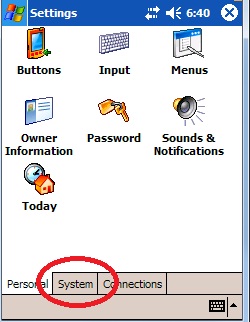
Confirm battery charge:
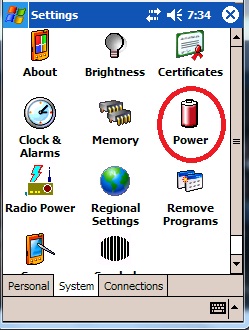 Confirm 100% charge:
Confirm 100% charge: 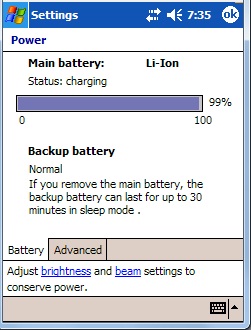
Configure the Bar Code Scanner
From the System tab of settings, tap the Inermec Settings icon:

Find the postamble property if the internal scanner in the tree, and enter "\x0D":
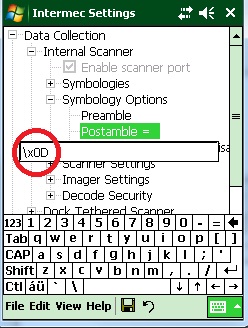
Now, tap the RETURN key (lower right on beyboard) and you'll see:
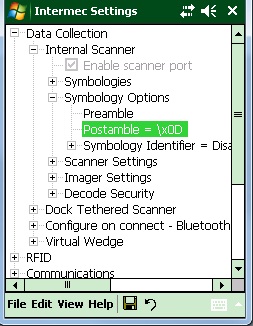
Open the Data Collection tree.
Make sure that Enable UPC A and Enable UPC e are both checked:
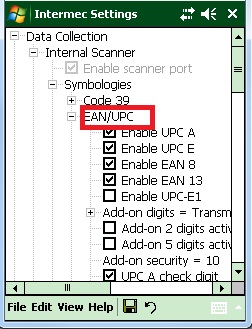
Ensure that UPC A check digit and UPC E check digit are both checked
and UPCE xmit as UPCA is NOT checked:
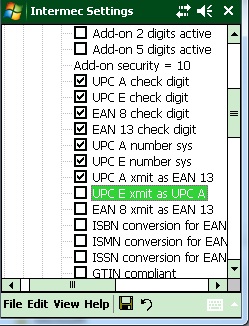
Be sure to SAVE these settings as described previously.
Apply the patch to improve scanner streaming speed described in the kbase
Intermec CK3 experiences slow data streaming from bar code scanner
Note: Copy the jcs.ini from the Mobile Staging Files folder intended for the CK-3 to the \program files\jargonsoft folder on the mobile device.
It is specifically set to not be refreshed when apps are updated. This is because the refreshed copy from the server is meant for the MC5040.
Install a RAMDISK to improve database access performance.
See the kbase article How to create a ramdisk for WM5 and above environments
Installing the Mobile App
NOTE: Each install MUST be done separately. Do not combine the steps.
Install Jargon Reader via Active Sync (winXP) or Mobile Device Center (win7):
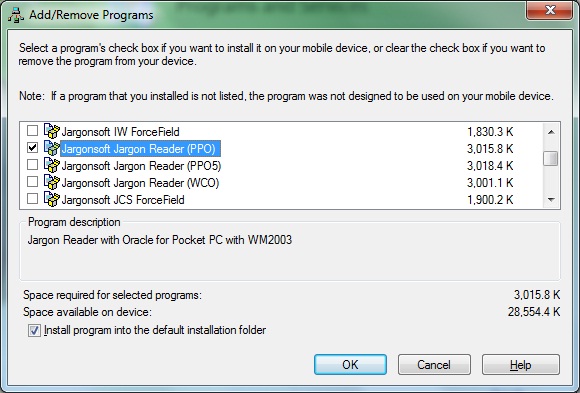
Install JC Quick Order via Active Sync (winXP) or Mobile Device Center (win7):
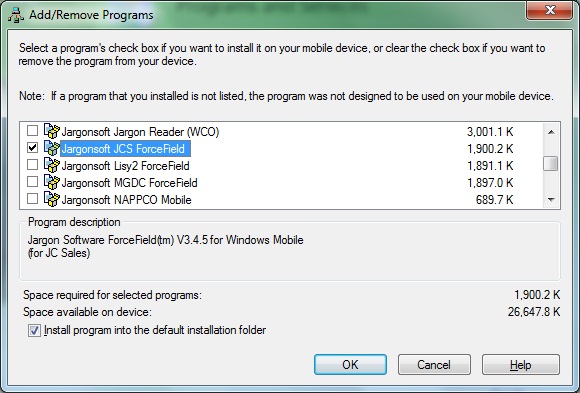
Manually Copy Modified Files
- Copy jsi.ini to \program files\jargonsoft on mobile device.
- Copy odbx.txt to \orace on mobile device.
- (optional) Copy ApplicationMenu.xml to \program files\jargonsoft on mobile device
- rename J/R shortcut to "JC Sales Quick Order" using a desktop Windows Explorer
Using the PDA Emulator for the Initial Download
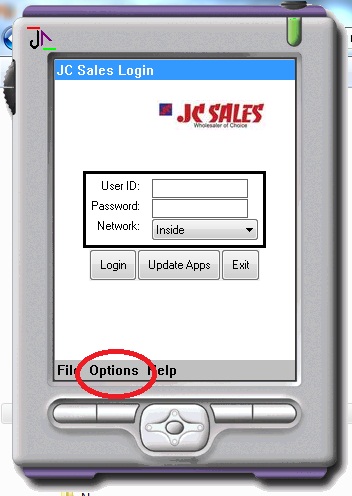 Options -> Admin Tools:
Options -> Admin Tools: 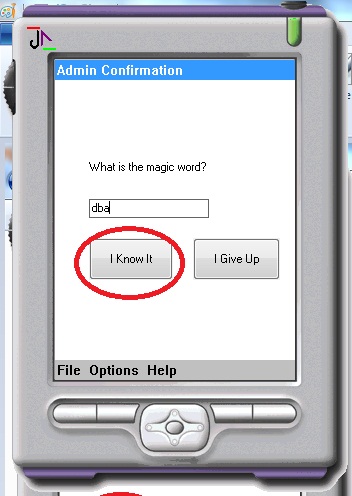
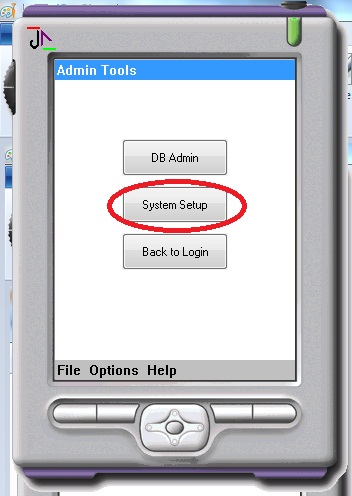 Be sure to SAVE changes:
Be sure to SAVE changes: 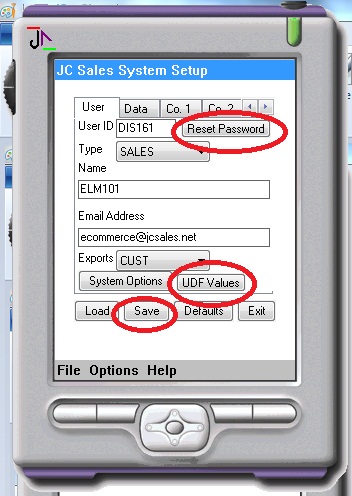
Check UDF values. Set #2 to "MC5040=N" since the device is an Intermec CK-3.
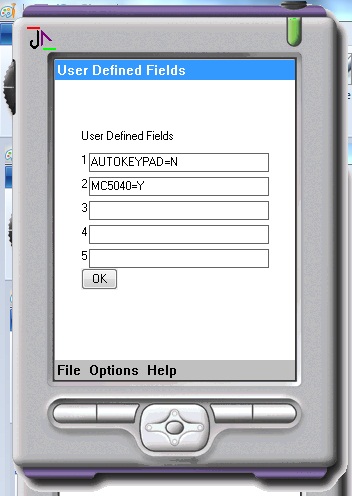
Back out to Login Screen (set password to "dis161"):
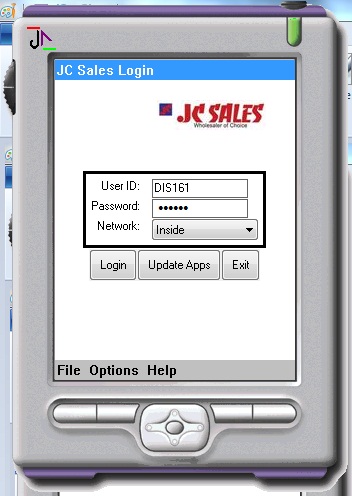 Go into Admin Mode :
Go into Admin Mode : 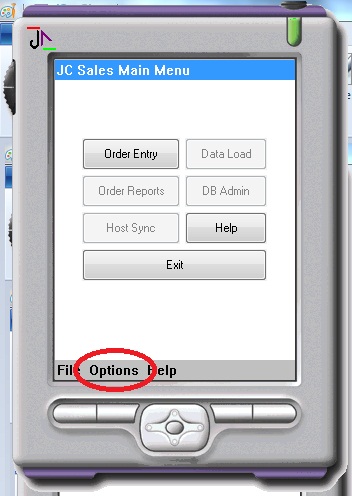
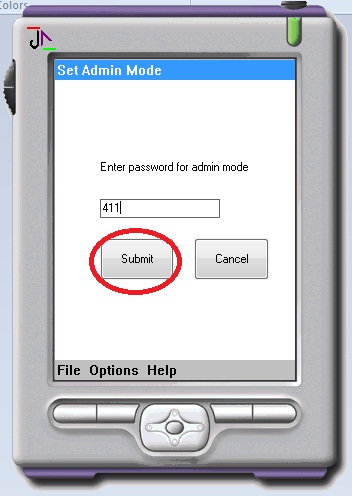 Initial Download:
Initial Download: 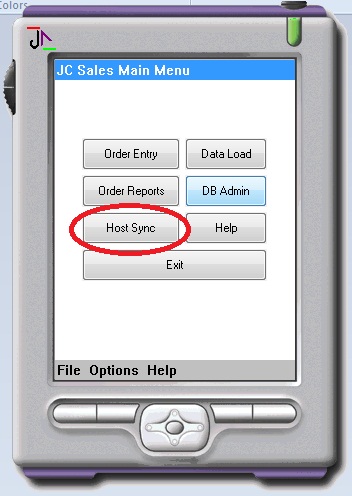
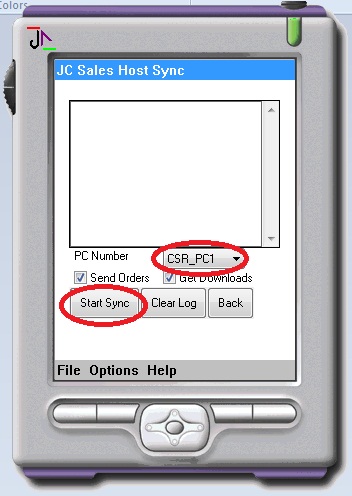 Should take about 2 min.
Should take about 2 min. 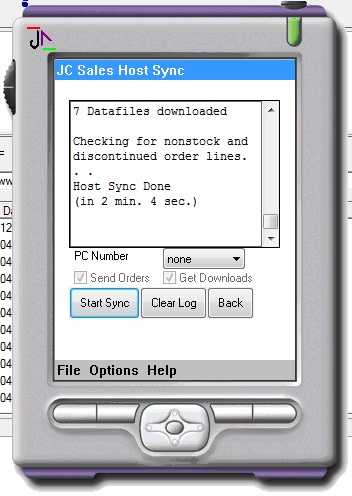
Copying the PDA Emulator data to the mobile Device
Create a folder on the mobile device named \ramdisk.
Be SURE to exit the PDA Emulator before copying the database files.
Copy c:\jargonsoft\db\jcs_ff.odb to \ramdisk on mobile device.
Copy c:\jargonsoft\db\jcs2_ff.odb to \ramdisk on mobile device.
MOVE (i.e. cut and psste) \jargonsoft folder on mobile device to \Storage Card
Final Configuration
Cache the mobile app:
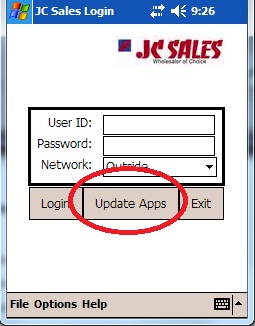
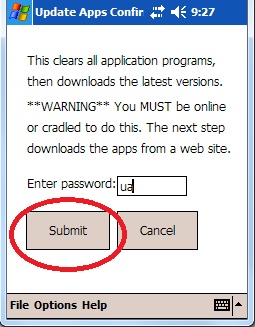
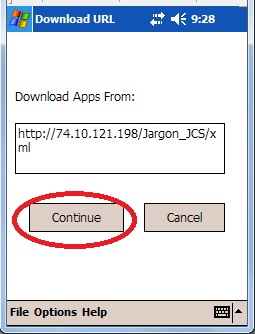
Should say:
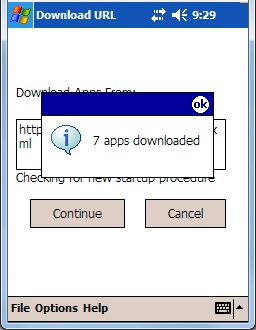 and:
and: 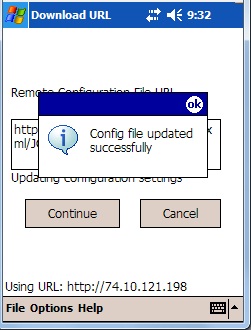
Updating the ApplicationMenu.xml File
Manually
The ApplicationMenu.xml file very seldom changes. If it does, it cannot be cached (refreshed) like all other elements of the mobile app.
This is because ApplicationMenu.xml is our start up procedure, and it handles updating apps, and it cannot be changed by itself.
Also, when apps are cached (including ApplicationMenu.xml) the cached versions are stored in the \program files\jargonsoft\cache folder in DOM format with .dom file extension. This means that there is a file called ApplicationMenu.dom in the cache folder corresponding to the ApplicatonMenu.xml file.
Here is what to do:
1. Leave Jargon ForceField completely.
2. Copy the new ApplicationMenu.xml to \program files\jargonsoft on the MC5040.
3. Important: Delete the \program files\jargonsoft\cache\applicationmenu.dom file (or else it will continue to use the old cached version).
4. Launch Jargon ForceField. It automatically will re-cache the new code.
Automatically
Updating the ApplicationMenu.xml can be done in the field automatically.
If an ApplicationMenu.xml file is place in the folder on the server containing the mobile app xml files (c:\inetpub\wwwroot\jargon_jcs\xml) then, when update apps is done, the mobile app will download the new ApplicationMenu.xml and notify the user as follows:
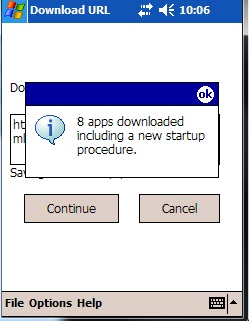 Then ...
Then ... 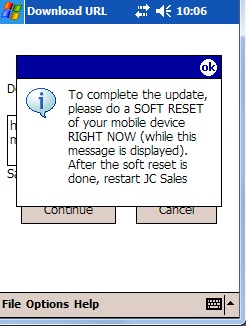
MyMobiler
Download My Mobiler here.